Electric ladyland: Is the real virtual reality space-race being fought not by games companies, but high-tech pornographers?
Systems like Oculus Rift are set to transform the world of video gaming
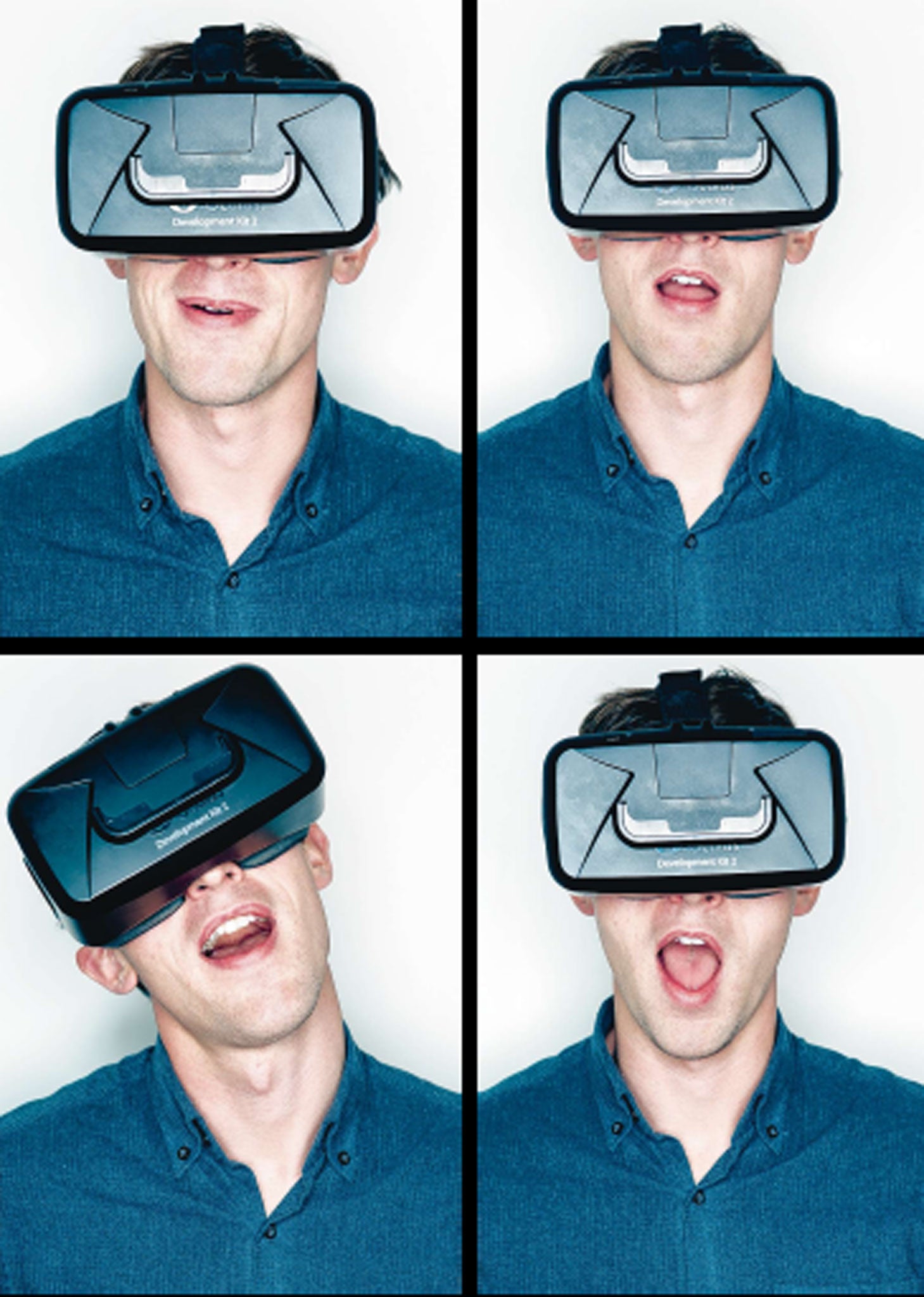
A naked woman lies on her back on a mahogany bed before me, gripping her ankles by her ears. The bed stands on a sandy beach in the shade of a palm tree. I turn my head to get a closer look.
There's a fruity, synthetic smell of air-freshener – and the air conditioning is on a little too high. I hear people chatter, but on the beach, the woman and I are alone. Turning, I see there is a cliff-face behind me, stretching up to the sky.
I am wearing an Oculus Rift virtual-reality (VR) headset and in my hands I hold a plastic videogame controller. Pressing one button causes the woman – whose name I have been told is Natalia – to flick, like an old-fashioned slideshow, through a series of poses. Flat on her stomach; the foetal position; on her back, legs splayed.
If I hold down another, she rises above the bed and hangs in mid-air. I can then rotate her on all three axes. Another button makes her grow gigantic so that I have to crane my head back to see past her immense thigh. Pressed again, she shrinks down to the size of a doll.
"It's interesting to get your reaction," says a man, who we'll call Toby, removing the headset. Blinking, I find myself back in the stark fluorescent light of a low-ceilinged studio somewhere in Suffolk. I am, Toby explains, the first person outside the company he has trialled the technology on. This is the head office and body-scanning facility of Veiviev, of which Toby is the founder and sole owner. He has asked to go by a pseudonym for fear of tarnishing other VR projects he is working on.
Toby is one of a handful of people around the world engaged in a pornographic space race. The first man to the moon will be he who achieves video-quality interactive content. An immersive porn videogame, if you like, in which the character(s) of your choosing will respond to your every prompt and indulge your every fantasy. Because of technology like his, the graphics won't just be lifelike, they will be perfect representations of the real world. And for an industry beleaguered by the explosion of free video sites, a game-changing, paid-for product like this can't come along soon enough.
As with Apollo and Sputnik, the technology comes with a hefty price tag. In the centre of Toby's studio stands a rig of 150 Canon 100D cameras pointed inward from every conceivable angle to a central stage. This is where he photographs the models. A set of images taken simultaneously is processed by a computer 100 times more powerful than a home PC to create a VR reproduction in intricate detail.
Toby has spent £250,000 on the set-up to date – and needs another £1-2m to trade up to video cameras. He's confident it's a shrewd investment. "When it hits the consumer market, it's going to go absolutely mental," he says, earmarking next year for the first interactive VR products. "I don't think the public are aware of what's going to happen."
However, he could well be racing to stick his flag in shaky ground. Virtual reality's history is a chequered one of unrealised expectations in which a viable, affordable product has constantly remained out of reach. The industry may not yet be over a hump. Last month, Oculus VR announced that the Rift would not make it from the developer to the consumer market this year, as planned. It's now due in early 2016. That, despite the company's founder having said that such a delay would only occur if something went "horribly wrong". Rebecca Bolen of SugarDVD – a porn Netflix of sorts currently researching VR technology – is cautious in giving a time frame for the technology. "A lot of this is still very out there," she explains over the phone from LA.
Despite these concerns, Bolen, Toby and the other space-racers believe that, rather than exploiting this new technology, they may in fact prove to be its saviour.
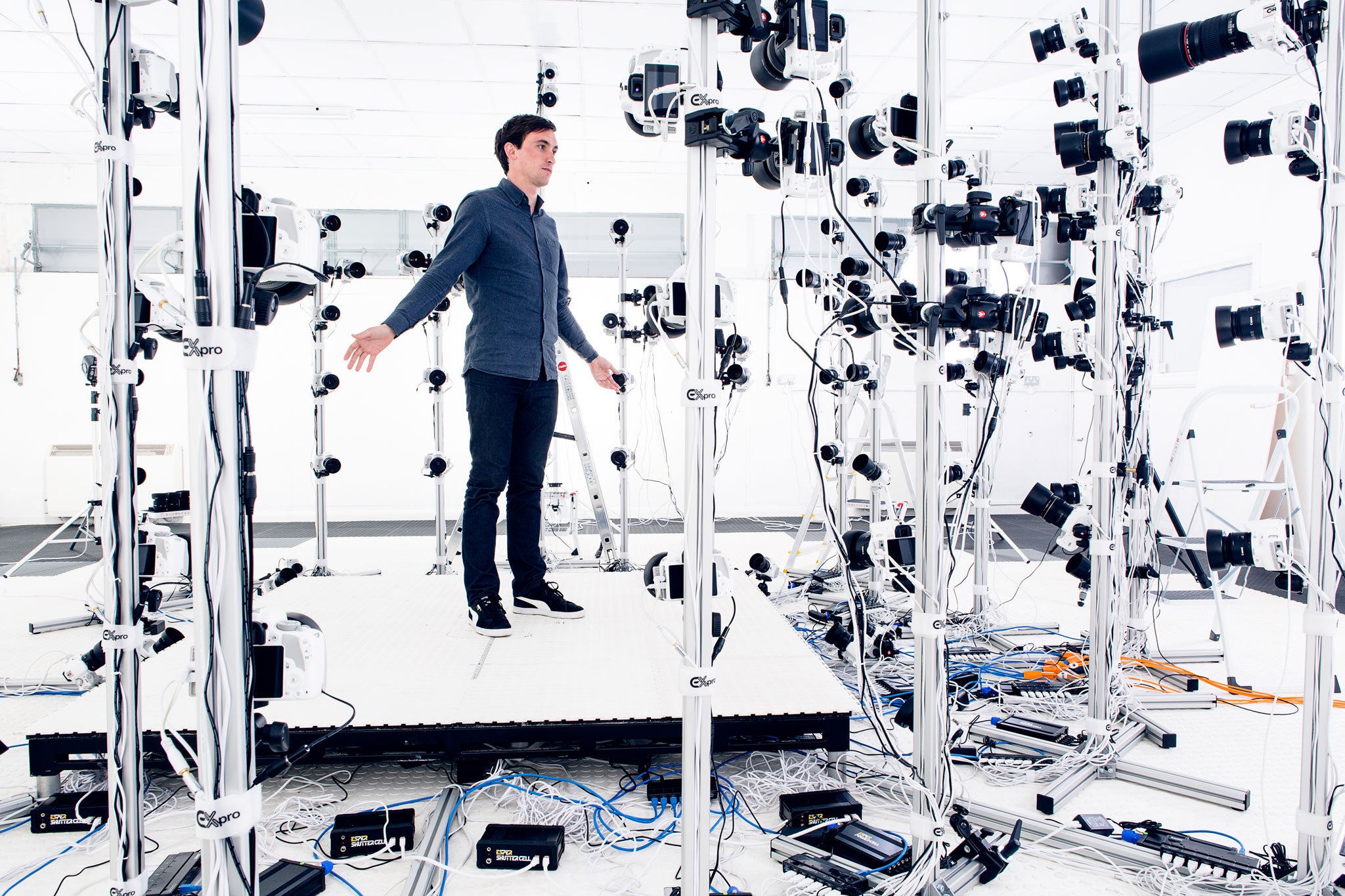
Conceived of in various guises during the mid-20th century, virtual reality first came to consumers via the videogame sector in the 1990s. Products such as the British-made Virtuality and Nintendo's Virtual Boy promised interactive gaming at home and in arcades. For the first generation brought up on computers, the appeal was strong.
However, the technology ultimately fell short and even the most ardent gamers soon tired of shoddy graphics, clunky equipment and prohibitive price tags. VR was all but mothballed, kept in existence at the end of the decade largely in the form of expensive military training kit.
One person who didn't give up the dream was Palmer Luckey. On 2 August 2012, aged 18, he set up a Kickstarter page. It asked for $250,000 to pay for development kits of his VR headset, the Oculus Rift. Obsessed with VR since the age of 11, he had cobbled together a prototype described by one early user as "dangling wires and circuit boards and duct tape and hot glue all over the place."
However, initial feedback had been positive and the crowdfunding campaign shot past its target in under 24 hours – and ultimately raised $2.4m. The first-generation developer kit won plaudits and, in 2014, Facebook snapped up the company for $2bn. Aged 20, Luckey joined the pantheon of barely-adult, mega-rich architects of the digital world.
The Rift is just one of a handful of VR headsets slated to come to market in the next two years – each approaching the brief from a slightly different angle. While the Rift's motion-sensor camera gives a limited scope for movement, the SteamVR headset from Valve (the company behind the all-conquering Counter-Strike series of games) allows users to move freely within a demarcated space, and have those movements mirrored in the VR world they are viewing. Duck, jump, roll over and the VR will react accordingly.
But perhaps the likeliest route to a VR-enabled populace is with technology such as Samsung's Gear headset and Google Cardboard. The Gear is a basic headset to the front of which you clip your Samsung phone. It provides the screen and a set of internal gyroscopes to monitor your movement. Google Cardboard simplifies it further: fold a headset from cardboard, insert your phone loaded with an app and you are ready to plug in to VR free of charge.
With the potential for such a sizeable market, porn industry players are quickly turning their attention to VR. Brian Schuster originally made his fortune with an early search engine dedicated solely to porn and then with pop-up internet ads. Last month, he ploughed $50m into creating a new Oculus Rift-compatible version of his virtual reality world, Red Light Center (RLC).
Based on Amsterdam's Red Light District, RLC allows users to build an "anatomically correct" avatar. They are then free to wander through strip clubs and boudoirs, engaging in all manner of activities with other avatars controlled by other users. Want to tie someone up and spank them? Just select the option from a menu and watch the fun pan out. We're not a million miles away from the scene in 1993's Demolition Man in which Sandra Bullock's character asks Sylvester Stallone's if he'd like to have sex – and then brings in a pair of chrome helmets.
So what would the effect of this be on the way we behave? Dr Ashley Conway is, as far as he knows, the only psychologist in the UK developing VR as a tool to treat psychological disorders. He has had much first-hand experience with the technology and says that VR porn has the potential to become the "crack cocaine" of the industry.
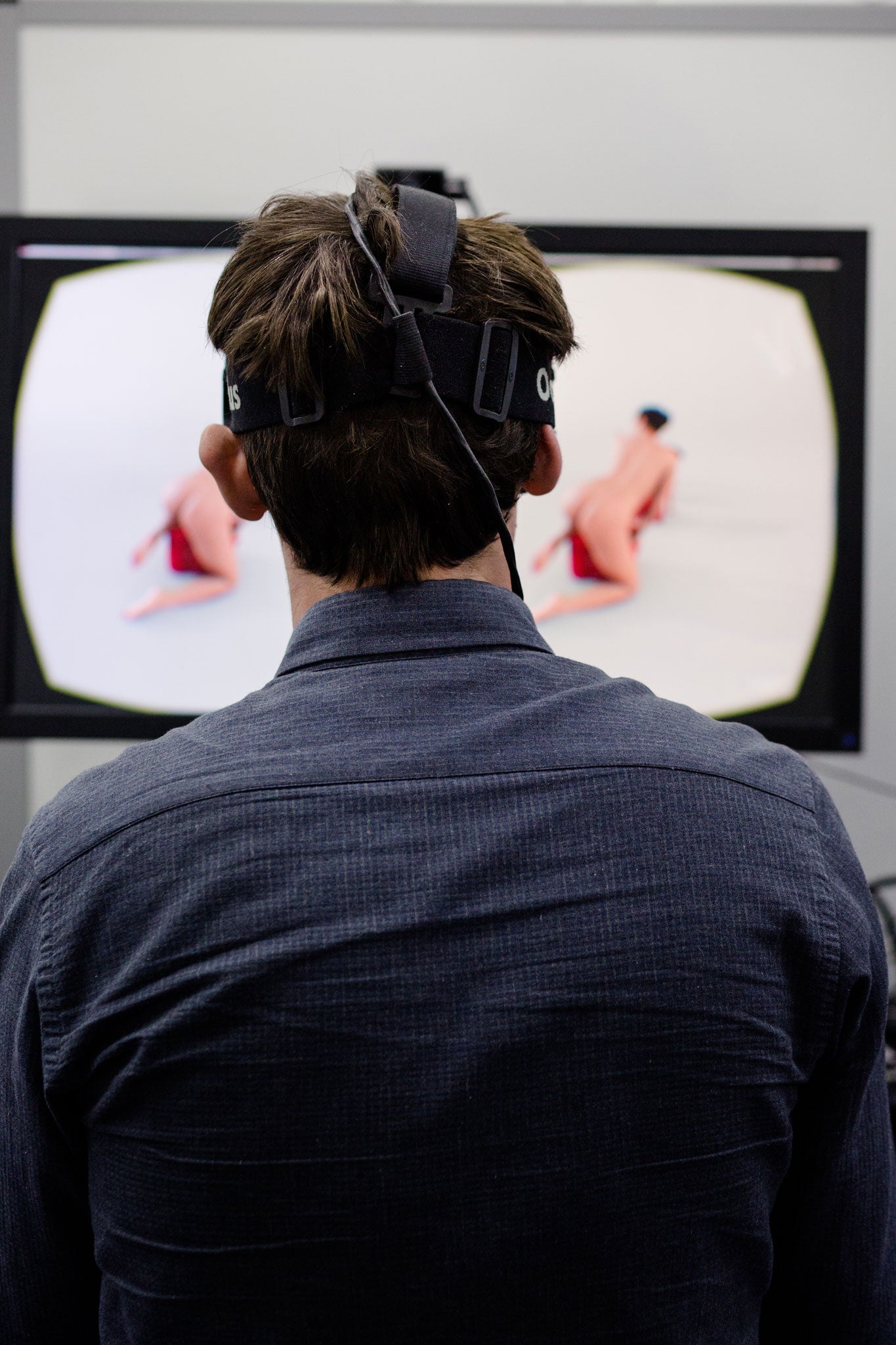
"I describe the experience as visceral. You feel it in your body. In the action programs that I have tried, like a rollercoaster ride, you feel your stomach lurch and you lean this way and that – you can't stop yourself. Even though there is a part of your brain telling you that this is an illusion, you can't help reacting to it. Your heart rate increases, you sweat. It's a massive adrenaline rush, which will be addictive to certain people."
Back in Suffolk, I find myself in a horizonless grey-white aircraft hangar. The Veiviev logo looms in the air above me. In front is a row of ten duplicate models of the same girl, Ariel, each in a different position.
Thumbing the joysticks on the controller, I approach one model and lean in as far as I can. I can see the pores on her neck, the scuffed label on the bottom of her turquoise high heels and, if I turn my head, the butterfly on the back of her earring. For all intents and purposes, I am looking at a human being – albeit one frozen in perfect stillness.
The overall effect is absorbing. I don't necessarily forget where I am, but with my attention taken up with what's in front of me, that knowledge slips to the back of my mind. One of the recent breakthroughs with VR has been to achieve near-zero latency, meaning graphics respond to a user's movements instantaneously. This enables you to observe the models at curb-crawler pace. If you so choose.
The girls may be completely lifelike, but they are also lifeless. Examining them in this way is like being in a museum looking at exhibits. Toby says he's sure that users are already using this as a substitute for conventional porn. But it's not very sexy, I say. "It's a case of putting music on, turning the lights off, and finding a model that appeals to you," he suggests. "A few people don't like Ariel. It's not really their thing. She's quite thin and tall. But there are different models."
He compares these experiences to viewing magazine spreads, but says the technology is available for 3D video. It comes with a £1-2m price tag. With the headset on, you could be a spectator in a live porn show – viewing from any angle you choose.
A Spanish company named Virtual Real Porn began offering 2D video filmed and optimised for VR headsets at the beginning of the year. With a 180-degree field of vision, you are free to look around at the wallpaper while engaging in a variety of sexual activities. A spokesman for the company said that they, too, hope to go interactive in 2016.
But the ultimate goal is to create participators, not spectators. Toby loads up a video on his computer monitor. A woman's chest is being rubbed by a hand and moves accordingly. Using a piece of kit called a Leap Motion tracking device attached to the front of the headset, a user can view their hands in virtual reality and interact with what they see.
Complex algorithms borrowed from the world of special effects then cause the digitally rendered woman's chest to respond as normal human flesh would. "It's all mathematics and calculated physics," Toby explains. "Her skin has weighting to simulate muscle tissue."
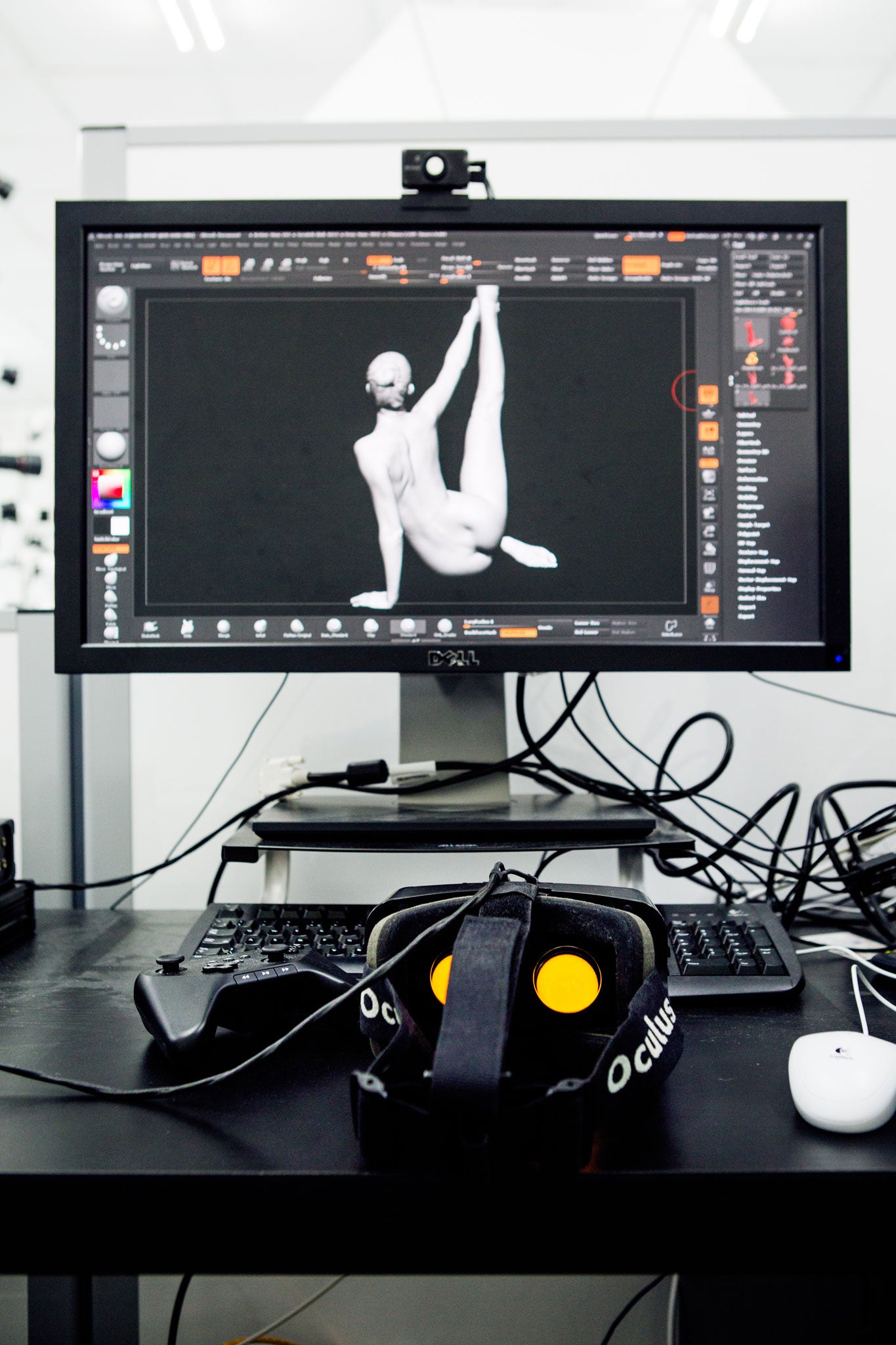
Bolen sees the ultimate challenge as getting Toby's lifelike renderings into a fully interactive universe like Shuster's. Games developers have laid much of the groundwork. "We have video games that have a reactive environment," she explains. "When you're programming something, you have to account for any possibility.
"Game companies and tech companies have QA testers that test stuff that you wouldn't even think about doing in a videogame. What happens if the character walks into the wall 50 times in a row? If, on that 51st time, he goes through the wall, then you have a problem."
But, she adds, "With the sexual contexts, there are so many different things people could be doing and so many different ways people could be interacting with a different person."
Elsewhere, there is huge investment in haptic technology. Wearable technology that emits ultrasonic vibrations will give users the sensation of pressure and textures. The Apple Watch, for example, is set to come with a range of in-built haptic sensations to reflect a range of alerts – and will include a function allowing users to send each other their heartbeats.
Companies such as Virtual Real Porn are investing in "dildonics" – sex toys that connect to computers and simulate the experience on the screen. The preserve of basement porn enthusiasts, you might think, but this gives a worrying idea of the potential sexual redundancy of humans in years to come.
There are, of course, a whole host of other ethical question marks – not least that the technology currently converts women (and it is just women for now) into digital "products". Virtual reality has come with concerns of a dystopian future since it was imagined in Tron and The Lawnmower Man. There is something deeply sinister about the meeting point of sex – our most instinctual, human impulse on which the future of our species relies – and the cold, indifferent hand of a machine. If computers ever want to take over, we may be handing them the ace card.
Bolen is sceptical of this. She counters by pointing to VR porn's use in long-distance relationships. One day, she says, we may well be able to exchange body scans with other people's headsets and have a two-way experience. But then this is tied up with a disconcerting security threat, she admits. What if those scans were hacked and downloaded? People would be free to do what they wanted with another person's naked, digital self – without their permission. We may look back on Jennifer Lawrence's iCloud hack with quaint affection.
Bolen says that security is of utmost concern for SugarDVD and adds that fears that the technology will tap into humans on a baser level are unfounded. "If your subconscious knows something, then your conscious also knows it," she says. "Subconsciously, you will know that you're not getting the exact same experience as you are with a real person."
However, Toby says he understands that not everyone will be won over by VR porn. "Feminist groups, religious fundamentalists, all these kinds of people," he says. "They're going to go completely nuts when they understand what this is."
Roz Hardie is the CEO of Object, a campaign against media sexism. Rather than going "completely nuts", she suggests that "there is nothing intrinsically wrong with virtual-reality headsets or any other technological development per se. It is the use to which they are put that can be a problem."
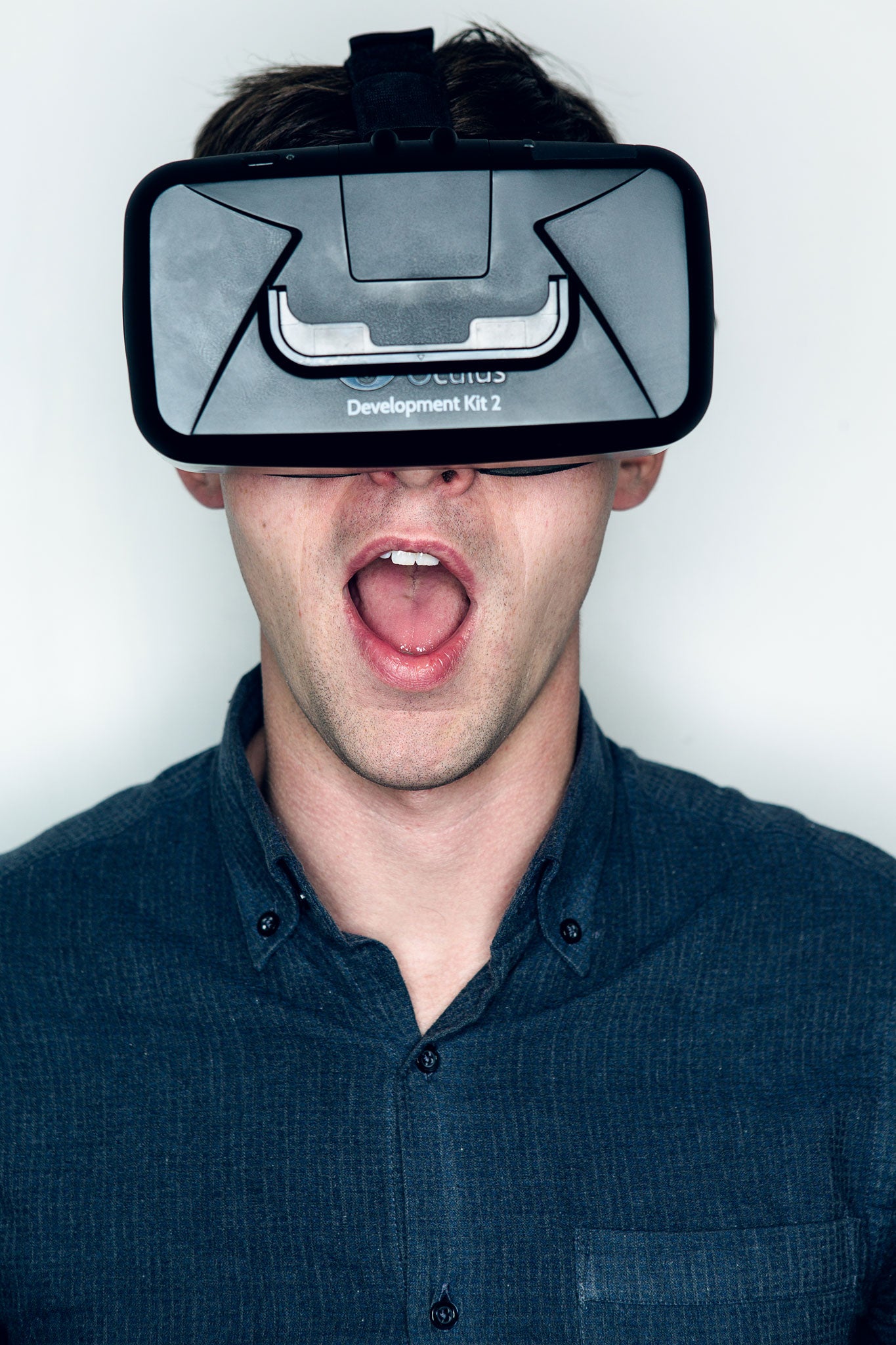
But, for Hardie, the history of technological developments in porn and sexual innovation demands pause for thought. "In practice, interactive technologies to date seem to have encouraged increased misogynist role play, enabling men to engage in fantasies which include, at the extremes of the spectrum, ending the life of the virtual woman," she says – a reference to the ability of players in a Grand Theft Auto game to have sex with and murder prostitutes.
In a rare TV appearance in 1994, Dr. Jonathan D Waldern, the founder of Virtuality, said: "When you look at virtual reality and who would adapt virtual reality... one key word keeps coming out. And that's entertainment." He was right in part. But where entertainment has done the legwork, and the military has kept things ticking over, porn may now pick up the baton.
"I actually feel that the adult industry will come first," says Bolen when I ask if SugarDVD is waiting for Hollywood to arrive at viable virtual reality. "It's almost like – food, sex and shelter – people enjoy having their base needs catered to. It's human nature."
"Put it this way," she adds. "Consumers have made it very clear that they'll spend money, time and energy on any kind of technology that makes it easier for them to consume adult content."
A cursory glance at recent history affirms this. It has gone down in tech lore that VHS triumphed over Betamax because of the latter's refusal to allow pornographers to use their new medium. A similar tale did the rounds when, more recently, Blu-ray knocked HD-DVD out of the market. The industry has also been credited with pioneering new online technologies such as Flash Video and HTML5.
This may in part be apocryphal, but people do have a track record of paying for porn (despite the industry's well-documented recent struggles in the age of streaming). And with an emergent technology, that revenue is crucial. RLC's profits go to maintaining Utherverse – a virtual-reality world that also offers gaming, social and educational services. In Toby's case, Veiviev was dreamt up to serve a wider purpose. He is a videogame developer by trade, not a pornographer. He says he wants to put right the disappointment of the mid-90s' efforts at VR. "There's not much money in 3D scanning," he says. "But with the adult market you can't really lose – it's an age-old industry."
VR porn has provided him with an instantly saleable commodity for which there is a buoyant market. Veiviev's best-selling "product" to date has been downloaded 7,000 times in the last month – at £5 a pop. And that number, Toby says, is steadily rising.
Join our commenting forum
Join thought-provoking conversations, follow other Independent readers and see their replies
Comments